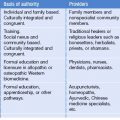CHAPTER 4 Action Steps to Improve the Health of New Americans
Introduction
The Task Force recommendations address barriers to full health for immigrants in Minnesota, but are applicable nationally, and have been amplified and annotated here to fit a national context (Box 4.1). Some of the recommendations are addressed more thoroughly in other chapters of this text. These are noted.
Box 4.1 The Task Force on Immigrant Health recommends these eight action steps to improve immigrant health
The Task Force met every 2 months from July, 2002, to July, 2004, with the following mission: ‘To promote quality, comprehensive and culturally competent healthcare for all recent immigrant communities, by effecting change in statewide health delivery systems.’ The Task Force utilized two reports from the Institute of Medicine as the framework for its deliberations: ‘Crossing the Quality Chasm: A New Health System for the 21st Century’ (2001) and ‘Unequal Treatment: Confronting Racial and Ethnic Disparities in Health Care’ (2003), Available at: www/iom.edu. The complete report from the Minnesota Immigrant Health Task Force is Available at: www.health.state.mn.us/divs/idepc/refugee/immigrant
Action Steps
1 Provide equal access to care for all, regardless of immigration or insurance status
The United States is the only developed nation in which healthcare is not universally guaranteed. Nearly 47 million Americans are uninsured and many immigrants are among them. Non-citizens are 7% of the population, but 21% of the uninsured. Their lack of access to healthcare affects us all.1
Access to healthcare can be crucial to achieving full health. People who lack insurance are less likely to be offered screening and treatment of many kinds. They are also less likely to benefit from medical advances, even common ones. Use of the latest treatment technology is lowest among the uninsured.2 Differences in access to care between immigrants and non-immigrants exacerbate these and other health disparities.
Leaving people uninsured is not cost-effective. Uninsured people make greater use of emergency rooms and sometimes delay getting care until they are desperately ill.3
Those suffering from infectious and communicable diseases who do not receive early screening and treatment can present a threat to an entire community. Decisions to cut healthcare benefits for immigrants can have unintended and more expensive results, especially when benefits to young children are cut (Box 4.2).
Box 4.2 Access to care: what you can do
If you are a healthcare administrator, you can:
Allow providers to offer creative alternatives for discounted or free care.
If you are an educator or researcher, you can:
Research the impact of equitable access to health insurance and care on health outcomes.
If you are a healthcare provider, you can:
Donate a percent of your work time to volunteer or charity care for immigrant patients.
2 Assess patients’ language preference, and healthcare organizations’ capacity to provide appropriate care
Current data on the connection between im-migration status and health status are inadequate.4 The link between minority status, low income, and health disparities is increasingly clear,5 but there is much missing in our understanding of possible links between health and immigration status or low English proficiency.
Information can be very revealing. Because of screening done by health authorities and researchers, we know immigrants suffer disproportionately from some health conditions, while seeming protected from others. Infectious diseases such as tuberculosis are more prevalent among the foreign born. On the other hand, birth outcomes among recent immigrant mothers are often better than those among other minority group mothers. (For a thorough discussion of the seemingly paradoxical ‘healthy migrant effect’ see Dr. Kathleen Fennelly’s analysis in Chapter 3). More data linking diseases and conditions with immigration status would help explain this paradox.
Collection and reporting of data on race, ethnicity, and primary language are legal, according to Title VI of the federal Civil Rights Act of 1964. No federal statutes prohibit this collection.6 Further, patients agree that it is important for healthcare providers to collect and track data on race, ethnicity, and language. When they know why the information is being asked of them, they disclose it readily to healthcare providers.7
Healthcare organizations can do more to collect and analyze useful data.8 Increasingly, healthcare facilities are expected to assess their capacity to serve diverse patients, including immigrants. In 2000, the US Department of Health and Human Services issued standards for culturally and linguistically appropriate services in healthcare that recommend internal audits and outcomes-based evaluations of cultural competence, as well as data collection on patients’ race, ethnicity, and language preferences.9
The Joint Commission on Accreditation of Hospitals and the National Council on Quality Assurance both recognize the importance of data collection and assessment regarding cultural and linguistic aspects of care in the accreditation review processes.10
A commitment to eliminating health disparities between immigrant and non-immigrant patients should be measurable from the boardroom to the waiting room. Healthcare networks and systems should have written policies about access, language services, provider training, marketing and of course, data collection. They should also have internal quality assurance measures to track goals toward increased cultural competence.11,12
Data collection and assessment leads to rational funding allocations, more cost-effectiveness, better care and ultimately, better outcomes.13 Using accurate information on the race and ethnicity of patients, providers, clinics and healthcare systems can identify health status and service disparities.14 This vital pool of information can serve as a guide in focusing prevention and treatment efforts as well as general expenditure of health dollars (Box 4.3).
Box 4.3 Data and assessment: what you can do
Stay updated, free articles. Join our Telegram channel

Full access? Get Clinical Tree







